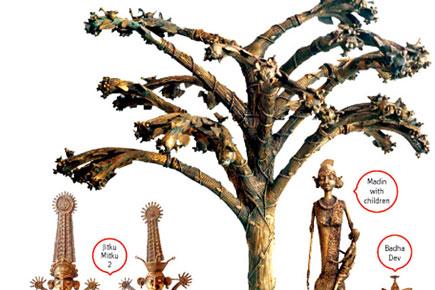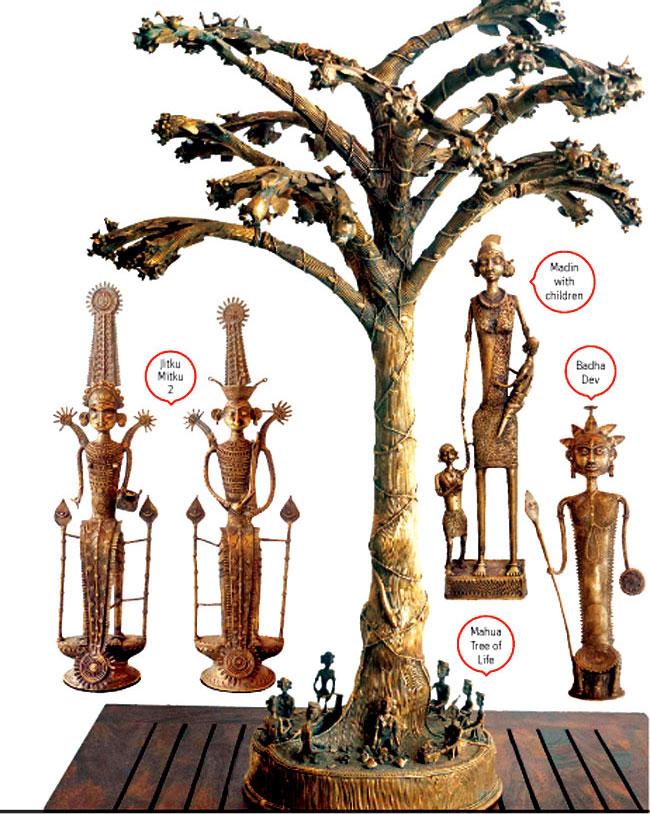Jamaat art gallery is showcasing Gadhwakam bronze sculptures by traditional sculptor Jaidev Baghel from Chattisgarh

Mumbai Guide, Jamaat art gallery, Jaidev Baghel, Chattisgarh, Gadhwakam bronze sculptures, traditional sculptor
What: Jamaat art gallery is showcasing Gadhwakam bronze sculptures by traditional sculptor Jaidev Baghel from Chattisgarh. Gadhwakam refers to the ancient Indian art of lost wax casting in which sculptures retain their intricacy, delicacy of form, line and modulation. The statue of the dancing girl with intricate carvings unearthed in Mohenjodaro (dating back to the third millennium BC) indicates that the lost wax process was perfected by then. Sculptors are called as Gadhwas (referring to the art of shaping or creating) and belong to the Bastar tribes living in the forests of Chattisgarh. A highlight of these sculptures are elongated torsos and limbs, and stylish figures. With changing times, their repertoire now includes sculptures of Ganesh, Krishna and even, Jesus and Mary. It takes a week to make a small piece and a month to make larger pieces.
ADVERTISEMENT

How: Pravina Mecklai, owner, Jamaat, elaborates, “Gadhwakam sculptures are different from other metal sculpture forms as each artefact is unique. No moulds are made; each piece is cast individually. Gadhwas are an aboriginal, nomadic tribe; that is the reason why they are always shown travelling. Being animist by belief, they worship trees, the earth, the sun, their gods and goddesses. Only recently have they started depicting deities of other communities.”
Who: Mecklai mentions that the lost wax process is tedious and laborious: “They start with rough clay which usually has hay mixed in it. This is shaped by hand to the form needed. Beeswax is extruded into wires of different diameters and this is wrapped around the clay form giving a detailed form to the work.” She adds that around this wax covering, a layer of fine clay and then rough clay is applied. A drainage hole is needed from where the wax can pour out. This entire “ packet” is placed in a furnace where the wax melts out, and is lost. Into the cavity created, liquid bronze is poured in slowly, to ensure no air bubbles. The packet is removed from the furnace and allowed to cool completely. “Only then is the outer clay covering cracked open and the sculpture is exposed. This is buffed and polished, and its beauty revealed,” she concludes.
 Subscribe today by clicking the link and stay updated with the latest news!" Click here!
Subscribe today by clicking the link and stay updated with the latest news!" Click here!






